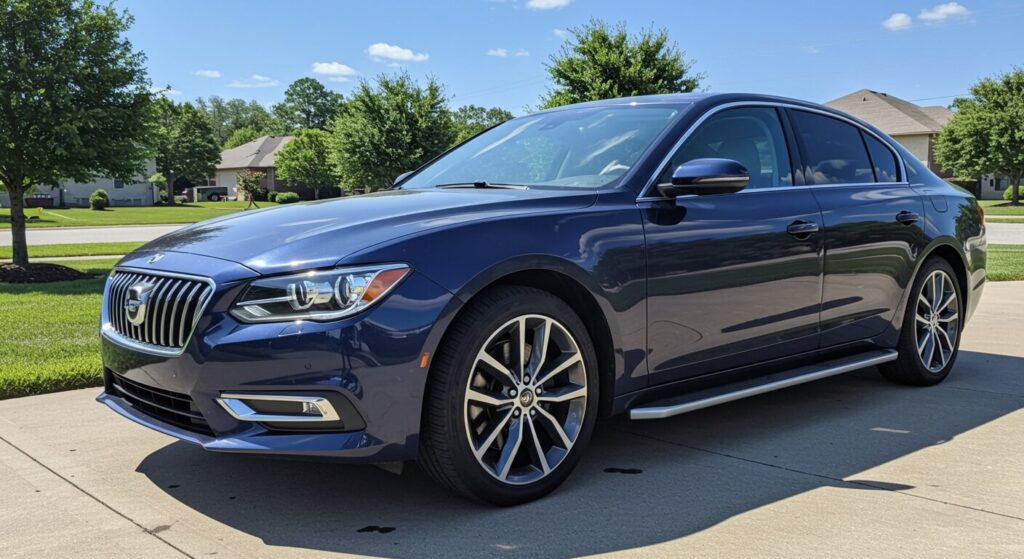You’ve probably seen them under a pickup or an SUV, might’ve even used one, but ever stopped and thought — what actually makes a running board not a step board? Sounds similar, right? But there’s more going on than folks usually notice.
What are Running Boards?
Running boards are flat platforms typically mounted along the side of the vehicle, often extending from the front wheel well to the rear wheel well. They have a wider surface area compared to side steps or nerf bars, providing a more substantial and stable stepping surface. Historically, they were essential on older vehicles with high ground clearance, offering a necessary aid for passengers.
Characteristics of Running Boards:
- Platform Design: Running boards present a flat, continuous platform.
- Wider Stepping Surface: A notable feature is their broad surface area, offering increased stability.
- Protection: They offer some protection for the lower part of the vehicle from debris.
- Aesthetics: Running boards often offer a clean and integrated look, fitting flush with the vehicle’s body, maintaining a uniform appearance.
Key Considerations for Running Boards:
- Reduced Ground Clearance: Running boards can impact the vehicle’s ground clearance, a crucial factor for off-road driving.
- Maintenance: Their wider surface area can collect more dirt and debris, necessitating more frequent cleaning.
- Cost: Generally, they can be more expensive, particularly those with added features like power retraction or integrated lighting.
What are Step Boards?
Step boards, often referred to as side steps or nerf bars, are usually narrower, tubular structures mounted below the vehicle’s doors. They provide a step up at specific points, typically one for each door. Their streamlined design makes them popular among off-road enthusiasts and those seeking a sportier or more rugged look.
Characteristics of Step Boards:
- Tubular Design: Side steps commonly feature a round or oval tube design.
- Compact Stepping Area: They offer a smaller, individual step at each entry point.
- Increased Ground Clearance: Compared to running boards, side steps typically have minimal impact on ground clearance, benefiting off-road driving.
- Aesthetics: They can provide a sporty, rugged aesthetic that complements the vehicle’s overall design.
- Material: Nerf bars often crafted from materials like stainless steel or aluminum, ensuring durability.
Main Functional Differences
Let’s not just go by looks. There’s a few key ways they differ in terms of function and purpose.
| Feature | Running Board | Step Board |
|---|---|---|
| Length | Full length under doors | Individual or partial |
| Mount Height | Closer to vehicle body | Often lower |
| Appearance | Sleeker, wider, body-hugging | Compact, sporty or utility |
| Step Surface | Wide flat platform | Narrower or pad-style |
| Best For | Ease of access, comfort | Clearance, lifted trucks, rugged use |
So you see, if you got an older family member riding shotgun, a running board probably makes better sense. But if you’re loading gear into a lifted Ford F-250, maybe a step board with deep drop works better.
Final Thought
Honestly, neither one’s “better” overall — just different tools for different types of folks and rigs. You wouldn’t use a wrench where a hammer needed. Same goes here. Pick what suits your lifestyle, passengers, and how often you’re hopping in and out.

